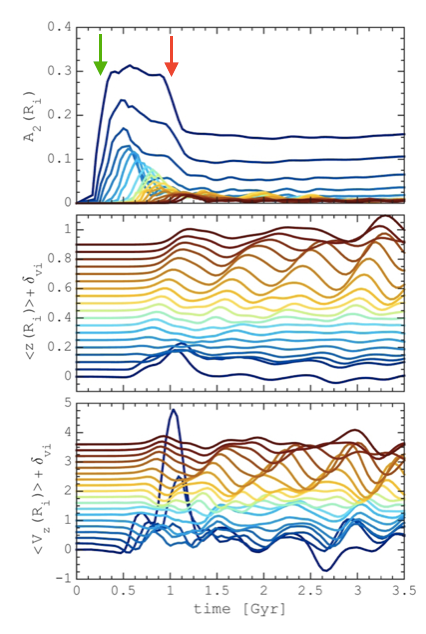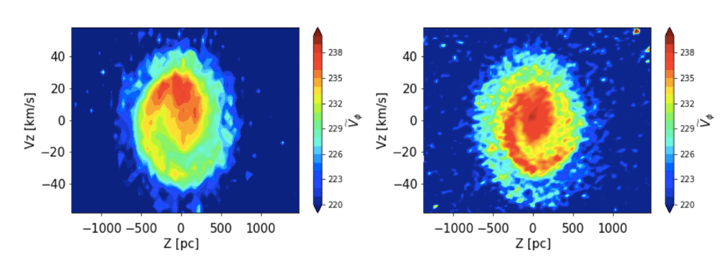Since the publication of its second catalog, ESA’s Gaia mission does not stop making new discoveries.

One of the most striking is the existence of particular structures in the phase space, that is to say in the space that combines positions and velocities of the stars to describe their motion. If we trace the distance to the galactic plane of the stars in the solar neighborhood as a function of their speed in the same direction, their distribution shows a spiral structure. This has so far been interpreted as due to a non-equilibrium state of our galaxy, possibly caused by the last passage through the galaxy disk of Sagittarius, the satellite currently closest to the Milky Way. The current motion of the stars would keep the memory of this recent disturbance.

In a work published in A&A Letters, researchers from the Paris Observatory and MPE, Garching, proposed a different scenario to explain the origin of these structures. They would constitute the fossil tracer of the formation phase of the Galactic bar, when it acquired its characteristic peanut-shape structure observed today. The radial and vertical motions generated by its formation would have spread for billions of years in the disk (see Fig. 1) and would be measurable today thanks to Gaia (see Fig 2). To show this, the team has made one of the highest resolution simulations ever made of the Galaxy, modeling the evolution of more than 100 million particles in the disc, for several billion years. This work opens many questions and perspectives : is it possible to use these spirals to date the time of bar formation, which is still unknown in our Galaxy ? And how to disentangle the signatures left by the formation of the bar from those induced by the passage of the Sagittarius galaxy ? Questions that this team plans to work on in the coming months.
Reference
- Khoperskov, Di Matteo, Gerhard, Katz, Haywood, Combes, Berczik, Gomez, 2019, A&A, 622, L6
